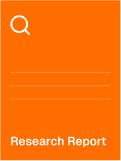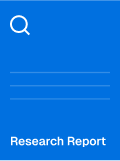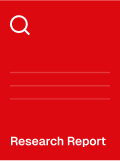
Contact Lenses - Market Share Analysis, Industry Trends & Statistics, Growth Forecasts (2025 - 2030)
Description
Contact Lenses Market Analysis
The global contact lens market stood at USD 10.60 billion in 2025 and is on track to reach USD 12.69 billion by 2030, progressing at a 3.66% CAGR. This steady expansion springs from premium material adoption, therapeutic lens launches, and the ongoing pivot to e-commerce rather than from a rising wearer base. Myopia’s rapid spread, especially among urban Asian youth, keeps demand resilient, while convenient daily disposables reinforce recurring revenue. Silicone-hydrogel remains the cornerstone material because it cuts hypoxia risk and underpins advanced designs such as smart sensors and drug-eluting lenses. On the commercial side, omnichannel strategies protect incumbents as online specialists chip away at brick-and-mortar traffic, and sustainability mandates spur R&D aimed at recyclable blisters and PFAS-free chemistries.
Global Contact Lenses Market Trends and Insights
Rising Prevalence of Myopia Among Youth
Global myopia prevalence among children and adolescents is forecast to reach 39.80% by 2050, translating into more than 740 million affected individuals. East Asian cities record the sharpest increments, with screen-time escalation during COVID-19 restrictions accelerating axial length growth. As myopia commonly begins in childhood and progresses through teenage years, demand stabilizes for corrective wear, while dual-focus and peripheral defocus lenses emerge to slow progression. One Chinese trial showed dual-focus soft lenses limiting axial elongation by 0.10 mm versus spectacles over one year. This therapeutic edge shifts procurement from commodity correction toward premium prophylactic devices.
Rapid Adoption of Daily Disposable Soft Lenses
Daily disposables jumped from 17.1% of soft lens fits in 2000 to 46.7% in 2023, mirroring heightened hygiene awareness and convenience priorities. Uptake correlates with GDP per-capita, so penetration is deepest in the United States, Canada, and Western Europe. Younger adults prefer single-use wear that removes cleaning chores, while practitioners welcome the lower infection profile. Silicone-hydrogel disposables blend high oxygen flux with single-use packaging, although price sensitivity restrains emerging-market adoption.
Contact-Lens Related Dry-Eye & Wearer Drop-Outs
An estimated 30%–50% of the world’s 140 million lens wearers experience dry-eye symptoms that often culminate in discontinuation. Tear instability and surface desiccation degrade comfort, especially in extended-wear and monthly modalities. Manufacturers respond with water-gradient surfaces and self-lubricating coatings; Delefilcon A dailies significantly eased symptoms in one multi-center study. Microfluidic channels that pump tears across the cornea remain experimental but illustrate the race toward physiological compatibility.
Other drivers and restraints analyzed in the detailed report include:
- Technological Breakthroughs in Silicone-Hydrogel & Smart Lenses
- Expansion of E-commerce & D2C Distribution
- Stringent FDA / CE Regulatory Approvals
For complete list of drivers and restraints, kindly check the Table Of Contents.
Segment Analysis
The soft contact lenses segment continues to dominate the global contact lenses market, commanding approximately 64% of the market share in 2024. This significant market position is attributed to the numerous advantages these lenses offer over other product types, including superior comfort, easier adaptation for new users, and better oxygen permeability to the cornea. The segment's growth is further bolstered by technological advancements in silicone hydrogel materials, which provide enhanced breathability and moisture retention. Major market players like Johnson & Johnson Vision and Alcon have strengthened this segment through their innovative product offerings, particularly in daily disposable and monthly replacement categories. The segment is also experiencing the fastest growth rate in the market, driven by increasing consumer preference for comfortable vision correction solutions and the rising adoption of contact lenses for both medical and cosmetic purposes.
Spherical products retained 42.34% share of 2024 sales, buoyed by straightforward fits for myopia and hyperopia. Toric lenses, however, will post the segment’s strongest 4.67% CAGR as diagnostics identify latent astigmatism and stabilizing geometries improve rotational consistency. Multifocal formats aim at presbyopic boomers but still encounter adaptation resistance.
Advanced lathe-cutting and wavefront-guided molds now deliver bespoke optics, reducing higher-order aberrations and nurturing loyalty. Meanwhile, cosmetic overlays flourish in Asia’s social-media ecosystems. The contact lens market continues diversifying design SKUs, pressing manufacturers to automate small-batch production while maintaining price competitiveness.
The Contact Lens Market Report is Segmented by Material (Silicone Hydrogel, Hydrogel, and More), Design (Spherical, Toric, Multifocal/Progressive and More ), Usability (Daily Disposable, Weekly/Bi-Weekly, and More), Application (Vision Correction, Therapeutic, and More), Distribution Channel (Retail Optical Stores, and More), and Geography (North America, Europe and More). The Market Forecasts are Provided in Terms of Value (USD).
Geography Analysis
North America remains the largest region by value, supported by insurance coverage and practitioner density. The United States contributes the bulk of turnover, buoyed by premium daily disposables and early adoption of myopia-control designs. Canada mirrors these trends at smaller scale, whereas Mexico’s youthful demographics create fresh penetration opportunities despite price constraints. Regulatory clarity under the FDA accelerates innovation, but heightened scrutiny adds cost layers that smaller entrants must navigate.
Asia-Pacific delivers the fastest growth as myopia rates soar across China, Japan, South Korea, and Singapore. China exhibits explosive e-commerce lens sales, though cross-border gray markets muddy compliance. Japan pioneers smart lens R&D, while South Korea anchors fashion-led cosmetic demand. India’s urban middle class increasingly embraces silicone-hydrogel dailies, yet broad affordability hurdles persist. Regional heterogeneity obliges tailored go-to-market tactics ranging from key-opinion-leader engagement to WeChat mini-store activations.
Europe logs steady but moderate expansion. Germany and France favor premium multifocals for presbyopia, whereas the United Kingdom’s online retailers shape price transparency post-Brexit. Sustainable packaging and PFAS-free chemistry resonate with EU Green Deal priorities, prompting lifecycle assessments across the supply chain. Southern markets like Spain and Italy lean on family-run opticians, making relationship selling crucial. Harmonized MDR requirements reinforce patient safety yet extend time-to-launch for complex therapeutics.
List of Companies Covered in this Report:
- Johnson & Johnson Vision Care (Acuvue)
- Alcon
- The Cooper Companies
- Bausch + Lomb
- Menicon
- HOYA Vision Care
- Carl Zeiss
- EssilorLuxottica
- Seed Co.
- Contamac
- SynergEyes
- STAAR Surgical (EVO ICL contact-lens alternatives)
- Ginko International (Hydron)
- BenQ Materials (Miacare)
- Clearlab
- Optical 88
- Oculus Private Limited (India)
- Interojo
- Shanghai Weicon Optics
- Brighten Optix
Additional Benefits:
- The market estimate (ME) sheet in Excel format
- 3 months of analyst support
Table of Contents
- 1 Introduction
- 1.1 Study Assumptions & Market Definition
- 1.2 Scope of the Study
- 2 Research Methodology
- 3 Executive Summary
- 4 Market Landscape
- 4.1 Market Overview
- 4.2 Market Drivers
- 4.2.1 Rising prevalence of myopia among youth
- 4.2.2 Rapid adoption of daily disposable soft lenses
- 4.2.3 Technological breakthroughs in silicone-hydrogel & smart lenses
- 4.2.4 Expansion of e-commerce & D2C distribution
- 4.2.5 Surge in cosmetic & colored lens demand among Gen-Z in Asia
- 4.2.6 Emergence of myopia-control & drug-eluting lenses with reimbursement prospects
- 4.3 Market Restraints
- 4.3.1 Contact-lens related dry-eye & wearer drop-outs
- 4.3.2 Stringent FDA / CE regulatory approvals
- 4.3.3 Sustainability backlash against single-use plastics
- 4.3.4 Growing uptake of low-cost refractive surgeries (SMILE) in Asia
- 4.4 Value / Supply-Chain Analysis
- 4.5 Regulatory Landscape
- 4.6 Technological Outlook
- 4.7 Porter’s Five Forces Analysis
- 4.7.1 Threat of New Entrants
- 4.7.2 Bargaining Power of Suppliers
- 4.7.3 Bargaining Power of Buyers
- 4.7.4 Threat of Substitutes
- 4.7.5 Industry Rivalry
- 5 Market Size & Growth Forecasts (Value, USD Billion)
- 5.1 By Material
- 5.1.1 Silicone Hydrogel
- 5.1.2 Hydrogel
- 5.1.3 Gas-Permeable (RGP)
- 5.1.4 Hybrid
- 5.2 By Design
- 5.2.1 Spherical
- 5.2.2 Toric
- 5.2.3 Multifocal / Progressive
- 5.2.4 Cosmetic & Colored
- 5.3 By Usability / Replacement Modality
- 5.3.1 Daily Disposable
- 5.3.2 Weekly / Bi-Weekly
- 5.3.3 Monthly / Quarterly
- 5.3.4 Extended-Wear (≥7 days)
- 5.4 By Application
- 5.4.1 Vision Correction
- 5.4.2 Therapeutic (Drug Delivery, Bandage)
- 5.4.3 Cosmetic Enhancement
- 5.4.4 Prosthetic / Speciality (Ortho-k, Myopia Control)
- 5.5 By Distribution Channel
- 5.5.1 Retail Optical Stores
- 5.5.2 Hospitals & Eye Clinics
- 5.5.3 Online / E-commerce Platforms
- 5.6 Geography
- 5.6.1 North America
- 5.6.1.1 United States
- 5.6.1.2 Canada
- 5.6.1.3 Mexico
- 5.6.2 Europe
- 5.6.2.1 Germany
- 5.6.2.2 United Kingdom
- 5.6.2.3 France
- 5.6.2.4 Italy
- 5.6.2.5 Spain
- 5.6.2.6 Rest of Europe
- 5.6.3 Asia-Pacific
- 5.6.3.1 China
- 5.6.3.2 India
- 5.6.3.3 Japan
- 5.6.3.4 South Korea
- 5.6.3.5 Australia
- 5.6.3.6 Rest of Asia-Pacific
- 5.6.4 South America
- 5.6.4.1 Brazil
- 5.6.4.2 Argentina
- 5.6.4.3 Rest of South America
- 5.6.5 Middle East and Africa
- 5.6.5.1 GCC
- 5.6.5.2 South Africa
- 5.6.5.3 Rest of Middle East and Africa
- 6 Competitive Landscape
- 6.1 Market Concentration
- 6.2 Market Share Analysis
- 6.3 Company Profiles (includes Global level Overview, Market level overview, Core Segments, Financials as available, Strategic Information, Market Rank/Share for key companies, Products & Services, and Recent Developments)
- 6.3.1 Johnson & Johnson Vision Care (Acuvue)
- 6.3.2 Alcon
- 6.3.3 CooperVision
- 6.3.4 Bausch + Lomb
- 6.3.5 Menicon
- 6.3.6 HOYA Vision Care
- 6.3.7 Carl Zeiss Meditec
- 6.3.8 EssilorLuxottica
- 6.3.9 Seed Co.
- 6.3.10 Contamac
- 6.3.11 SynergEyes
- 6.3.12 STAAR Surgical (EVO ICL contact-lens alternatives)
- 6.3.13 Ginko International (Hydron)
- 6.3.14 BenQ Materials (Miacare)
- 6.3.15 Clearlab
- 6.3.16 Optical 88
- 6.3.17 Oculus Private Limited (India)
- 6.3.18 Interojo
- 6.3.19 Shanghai Weicon Optics
- 6.3.20 Brighten Optix
- 7 Market Opportunities & Future Outlook
- 7.1 White-space & Unmet-Need Assessment
Pricing
Currency Rates


